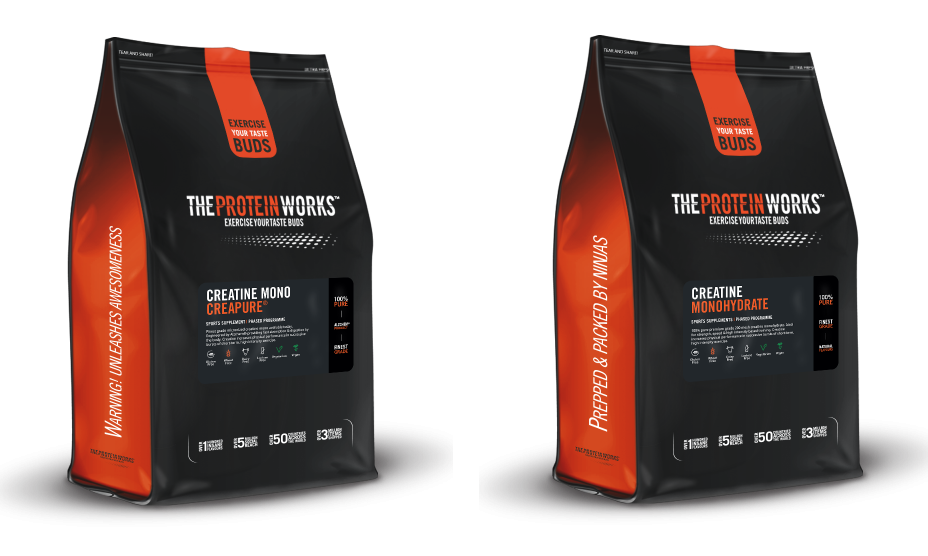Creatine benefits: scientific evidence and recommended use.
If you don’t already know Fitenium is a free, mobile, video-based social network for athletes who train strength or bodyweight exercises. At Fitenium users can follow their performance, compete and get discounts in nutrition and sports equipment stores. Download it here.
Creatine is one of those supplements in which a large number of myths and legends, both positive and negative, weigh heavily. This is quite curious since Creatine is probably the supplement with the largest number of studies and scientific evidence, so we will take advantage of all this evidence to shed some light and summarize the benefits of creatine, mentioning the studies that exist in this regard and giving some recommendations for proper use.
What is creatine?
Creatine is made up of three amino acids: L-arginine, Glycine and L-Methionine. Amino acids are the basic building blocks of protein and our body is capable of synthesizing a small amount of creatine per day, around 1 gram. The remainder of the creatine must come from diet and supplementation.
There are quite a few foods that have a significant creatine content, basically meat or fish, highlighting the following:
- Herring: 0.7g of creatine per 100g
- Pork: 0.55g of creatine per 100g
- Cow: 0.45g of creatine per 100g
- Salmon: 0.45g of creatine per 100g
- Tuna: 0.4g of creatine per 100g
- Rabbit: 0.35g of creatine per 100g
- Chicken: 0.35g of creatine per 100g
- Cod: 0.3g of creatine per 100g
Como podrá comprobar, ningún alimento tiene una gran cantidad de Creatina. To get to 5 grams of creatine we would need just over 700 grams of herring, which is why creatine supplements are so popular.
How does creatine work?
Before talking about the benefits of creatine or recommending how to take it, we must understand how it works and the effects it has on our body.
When creatine enters our body (or after being produced by our body), it binds to a phosphate molecule to create creatine phosphate. ATP (Adenosine Tri-Phosphate) is the body’s source of energy. When the body oxidizes any macronutrient, it does so to make ATP. It is responsible for driving almost all the bodily processes that exist.
By hydrolyzing a phosphate molecule, energy is released to power whatever process we are carrying out, for example contracting a muscle. Having lost a Phosphate, it is no longer Tri-Phosphate (ATP) but Di-Phosphate (ADP), which by itself is pretty useless.
This is when creatine comes into play, which will “donate” its phosphate molecule so that ADP can be converted back into ATP. With this new source of energy we will be able to train longer and harder!
Creatine benefits.
Now that we know how it works, we can move on to listing the benefits of creatine. Our goal is to clarify the picture rather than contribute to mysticism about creatine, so we will rely only on effects with scientific evidence.
- Improves sports performance: as we explained previously, greater access to Adesonine Tri-Phosphate provides us with more energy so we can train longer and with greater intensity. It is especially beneficial for high intensity and short duration exercises, such as weight training, crossfit or calisthenics. There is scientific evidence in the form of two meta-analyses (meta-analysis 1 and meta-analysis 2 to ) who conclude that there are benefits in this regard. It is the most sought-after benefit of creatine and it is the one with the most evidence, so it is worth taking creatine for this alone.
- Increases muscle mass: creatine has been linked to a greater amount of muscle mass, however this may be due to increased fluid retention (study). It may also be due to the fact that thanks to the previous point, muscle mass increases due to a greater intensity of training.
- Post-workout and post-injury recovery: Studies suggest that creatine helps prevent muscle damage and improves recovery after injury. It has also been related (study) taking creatine with antioxidant effects that reduce cramps and with brain rehabilitation or other injuries.
- Muscular dystrophy: strong a 2013 review of 14 studies found that people with muscular dystrophy who supplemented with creatine had an 8.5% improvement in strength compared to subjects who did not take the supplement.
- Depression: a study carried out in South Korea with 52 women who added 5 grams of creatine to their antidepressant treatment and experienced improvements in their symptoms after two weeks.
- Cognitive habilyties: strong a 2003 study published evidence that creatine can improve cognitive performance. After supplementing with 5 grams of creatine for 6 weeks, the subjects who did not take a placebo among the 45 people who participated in the study, obtained better results in tests of memory and intelligence.
- Other benefits: studies have been published that support the benefits of creatine in lowering cholesterol levels and diabetes, accumulation of fat in the liver to , and homocysteine levels.
Does creatine have risks?
It is very difficult to find another supplement with greater safety guarantees than creatine. There are a number of studies that show that there are no short-term problems with fairly high creatine intakes, up to 20 grams. There are also studies that do not report any long-term problems with more reasonable doses of 5 grams.
It is common to think that creatine can be harmful to the kidneys, an idea refuted by several studies. There has been talk of a relationship between creatine and increased baldness from this study, but it does not really establish a direct connection nor are there other studies that corroborate this idea.ea.
Which, how and when.
To take full advantage of the benefits of creatine, there are some guidelines to keep in mind when taking creatine, but it is not as complicated as it may seem.
First, there are several types of creatine: monohydrate, hydrochloride, ethyl ester, creatine phosphate, creatine nitrate, creatine citrate, creatine gluconate… the creatine that has the most scientific evidence behind it is creatine monohydrate, so that’s it. the one we recommend. There is the Creapure seal of approval which is more expensive than normal monohydrate, so we can only recommend Creatine Monohydrate and Creapure Creatine.

The recommended dose of creatine is between 0.8 and 1 gram for every 10 kilos of weight, that is, a person weighing 80 kilos would take 8 grams of creatine. Much has been said about the need for a loading phase consisting of 5 days taking 20 grams of creatine, there is no clear evidence in this regard and in any case it would only accelerate the filling of our creatine reserves, so at a recreational level it does not seem too much. necessary.
Greater benefits have been reported from creatine taken with carbohydrates or carbohydrates and protein and after training.
Despite all these benefits that we have talked about throughout this article, it may be that you are part of the percentage of non-responders to creatine, which is between 20 and 30% of the population.
conclusions.
Despite all the noise that surrounds sports supplementation in general and creatine in particular, the benefits of creatine are evident and proven, as well as the safety of its consumption both in the short and long term. However, we always have to start with the assumption that supplementation is a very small percentage of our success compared to the three factors that really make you progress: nutrition, training and rest.






